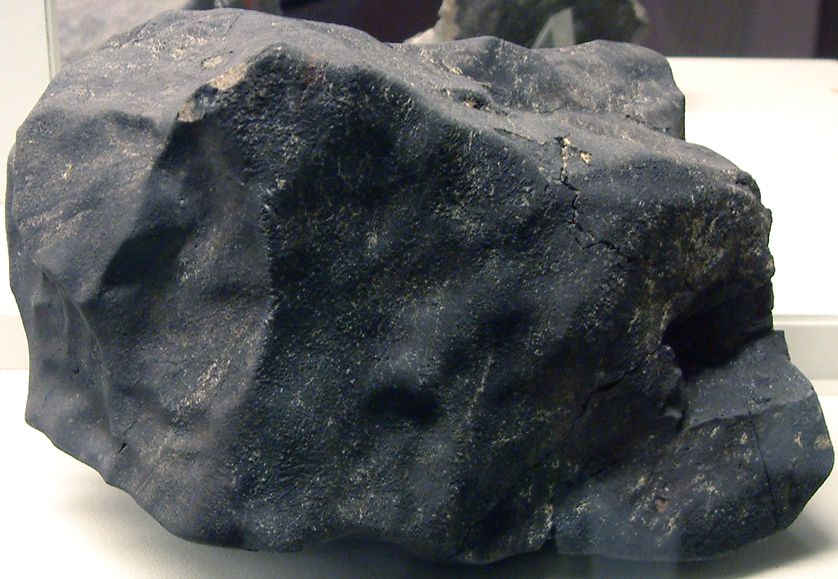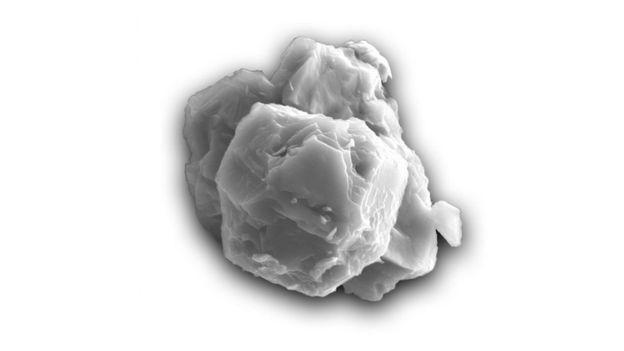科学家们刚刚发现了地球上最古老的物质——它闻起来很有趣
科学家们刚刚发现了地球上最古老的物质——它闻起来很有趣
Fifty years ago a meteorite landed on Earth near Murchison, a rural village located in Victoria, Australia. Over the years, scientists have studied each crevice of the celestial rock.
50年前,一颗陨石降落在澳大利亚维多利亚州的默奇森村附近。多年来,科学家们研究了天体岩石的每一个裂缝。
Recently, a new team of researchers discovered stardust on the meteorite that dated back 7 billion years, making it the oldest known material on Earth.
最近,一个新的研究小组在这块70亿年前的陨石上发现了星尘,这使它成为地球上已知的最古老的物质。

This is part of the Murchison meteorite, a famous rock discovered on Sept. 28, 1969. (Photo: James St. John [CC by 2.0]/Flickr)
"This is one of the most exciting studies I've worked on," said Philipp Heck, lead author of the paper describing the findings in PNAS . "These are the oldest solid materials ever found, and they tell us about how stars formed in our galaxy."
这篇论文的主要作者菲利普·赫克说:“这是我研究过的最令人兴奋的研究之一。“这些是迄今为止发现的最古老的固体材料。关于我们星系中的恒星是如何形成的。”
Stardust forms when stars burn out and pitch their particles into space, creating new planets, moons and meteorites.
当恒星燃烧殆尽并将它们的粒子抛入太空,形成新的行星、卫星和陨石时,星尘就形成了。
Heck and his colleagues found presolar grains on the meteorite, which are minerals formed before the sun was born. And they are tiny — about 100 presolar grains would fit on the period at the end of this sentence.
赫克和他的同事们在这块陨石上发现了太阳系前的颗粒,这些颗粒是在太阳诞生之前形成的矿物质。它们很小,大约100个前摩尔的颗粒适合在这句话的最后。

This is a scanning electron micrograph of a presolar grain. It may not look like much, but it's rare — only found in about 5% of the meteorites on Earth. (Photo: Janaina N. Avila/Australian National University)
The stardust has remained trapped and unchanged for billions of years, making it a time capsule of space before our solar system was born.
数十亿年来,星尘一直被困在宇宙中,没有改变,这使它成为了我们太阳系诞生之前的一个时空胶囊。
Presolar grains are rare; they've only been found in 5% of the meteorites on Earth.
前胚乳颗粒很少;它们只在地球上5%的陨石中被发现。
A large chunk of the Murchison meteorite was given to the Field Museum about 30 years ago, and since then University of Chicago researchers have isolated some of the solar grains.
大约30年前,默奇森陨石的一大块被捐赠给了菲尔德博物馆,从那以后,芝加哥大学的研究人员分离出了一些太阳颗粒。
"It starts with crushing fragments of the meteorite down into a powder," said Jennika Greer, a graduate student at the Fi eld Museum and the University of Chicago. "Once all the pieces are segregated, it's a kind of paste, and it has a pungent characteristic — it smells like rotten peanut butter."
菲埃尔德博物馆和芝加哥大学的研究生Jennika Greer说:“首先是将陨石碎片粉碎成粉末。“一旦所有的碎片都分开了它是一种糊状物,而且有一种刺激的特性——闻起来像腐烂的花生酱。”
The paste was then dissolved with acid until only the presolar grains remained and Heck and his team were able to determine their age and origin.
然后用酸溶解糊状物,直到只剩下前胚乳颗粒,赫克和他的团队才能确定它们的年龄和来源。
"We have more young grains that we expected," Heck said. "Our hypothesis is that the majority of those grains, which are 4.9 to 4.6 billion years old, formed in an episode of enhanced star formation. There was a time before the start of the Solar System when more stars formed than normal."
赫克说:“我们有比预期更多的新谷物。我们的假设是,这些49到46亿年前形成的大部分颗粒,是在一次恒星形成增强过程中形成的。在太阳系形成之前,有一段时间形成的恒星比正常情况下要多。”
Stardust is the next best thing to taking samples directly from stars, allowing us to learn more about the history of our galaxy. Heck hopes the methods used in his team's research will help other scientists as well.
“星尘”是直接从恒星上取样的下一个最佳选择,它能让我们更多地了解银河系的历史。赫克希望他团队研究中使用的方法也能帮助其他科学家。
"With this study, we have directly determined the lifetimes of stardust," Heck said. "We hope this will be picked up and studied so that people can use this as input for models of the whole galactic life cycle."
“通过这项研究,我们直接确定了星尘的寿命,”赫克说。“我们希望这将被研究,这样人们就可以把它作为整个银河系生命周期模型的输入。”
- 频道推荐
- |
- 全站推荐
- 推荐下载
- 网站推荐


















